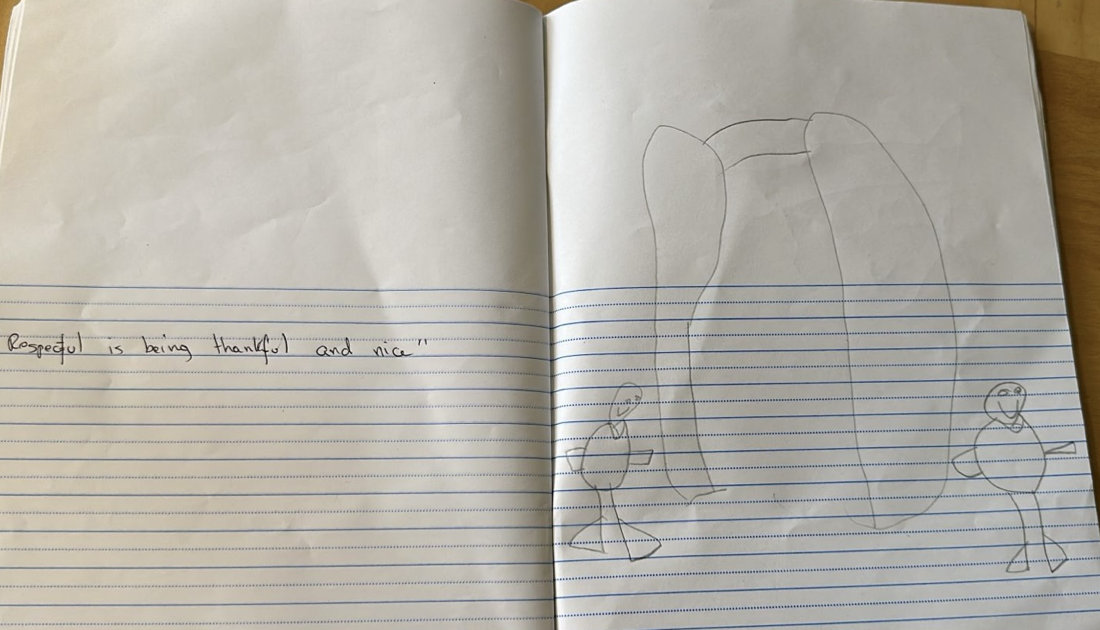|
Our fondness to create stronger relationships with creatures from nature exhibits through our many visible invitations. Luna notices the ring circles on top of the tree stump. She starts to draw a few circles in different colors which attracts George to add a dot right in the center of it. This interest of noticing the details has been made apparent by the illustrations. Howard Gardner (1991) suggested that the value of learning in nature (what he called “outdoor education”) is that the learning is not bound to school settings; rather nature education fosters connected knowing that is not separate from but an integral part of life. At the back field, Abigail draws a heart shape and a few more objects next to it on a concrete ground. When asked, she describes, "It is a heart for the birds. Birds love hearts." We further interpret Abigail's description as an invitation to invite the birds and build a bridge of trust between us and them by providing love and compassion. Phenice and Griffore (2003) suggested that children’s sense of self needs to develop in conjunction with and as a part of nature and that regular, positive interactions with nature are instrumental to helping children develop a respect for the environment. When we are searching for insects and living creatures in the front yard, we find tiny insects and slugs inside the bucket. We work together to keep them covered with soil. Friends value the importance of soil as an important value for these tiny creatures. When children play in nature, the result is a marked increase in children’s interest in and knowledge of nature (Fjortoft, 2001). We keep in mind how natural materials and the intentionally designed spaces in nature facilitate authentic play. Based on an invitation to think about "How do we think homes for bugs look like?", Isha illustrates her thought to Abeer. She thinks of the important aspects to create comfort and safety. Isha provides a ladybug and a snail with a comfortable bed made of leaves to sleep and a tiny house to protect them from the rain. Through this learning experience we associate our feelings to be comfortable and safe are some fundamental foundations to build trust with others. Through hands-on experiences we learn about plants, soil, insects and wood. As we exercise our close observation skills, we speculate or hypothesize; about what may happen, about what happens, and about cause-and-effects of relationships, We use our imaginations to build structures and props that support our make-believe story lines. We pile, prop, stack, and balance materials. We use tools to level surfaces, dig holes, make piles, dig a trench, and move materials. We stack, assemble and disassemble materials and work to get joints to meet (e.g., creating a small-scale “bug house” so bugs could seamlessly crawl up one side and down the other side). Open-ended natural materials provide important opportunities for active learning through sensory (i.e., tactile) and physical engagement. Depending on the size and shape of the materials, we have opportunities to use our fine and gross motor skills to manipulate these objects for different uses. Open-ended materials allow us to use our hands and bodies as tools. Kindest,
Children & Friends.
0 Comments
Leave a Reply. |
No part of this publication may be reproduced, distributed, or transmitted in any form or by any means, including photocopying, recording or any other electronic or mechanical methods, without the prior written permission of the publisher.
Archives
July 2024
|

















